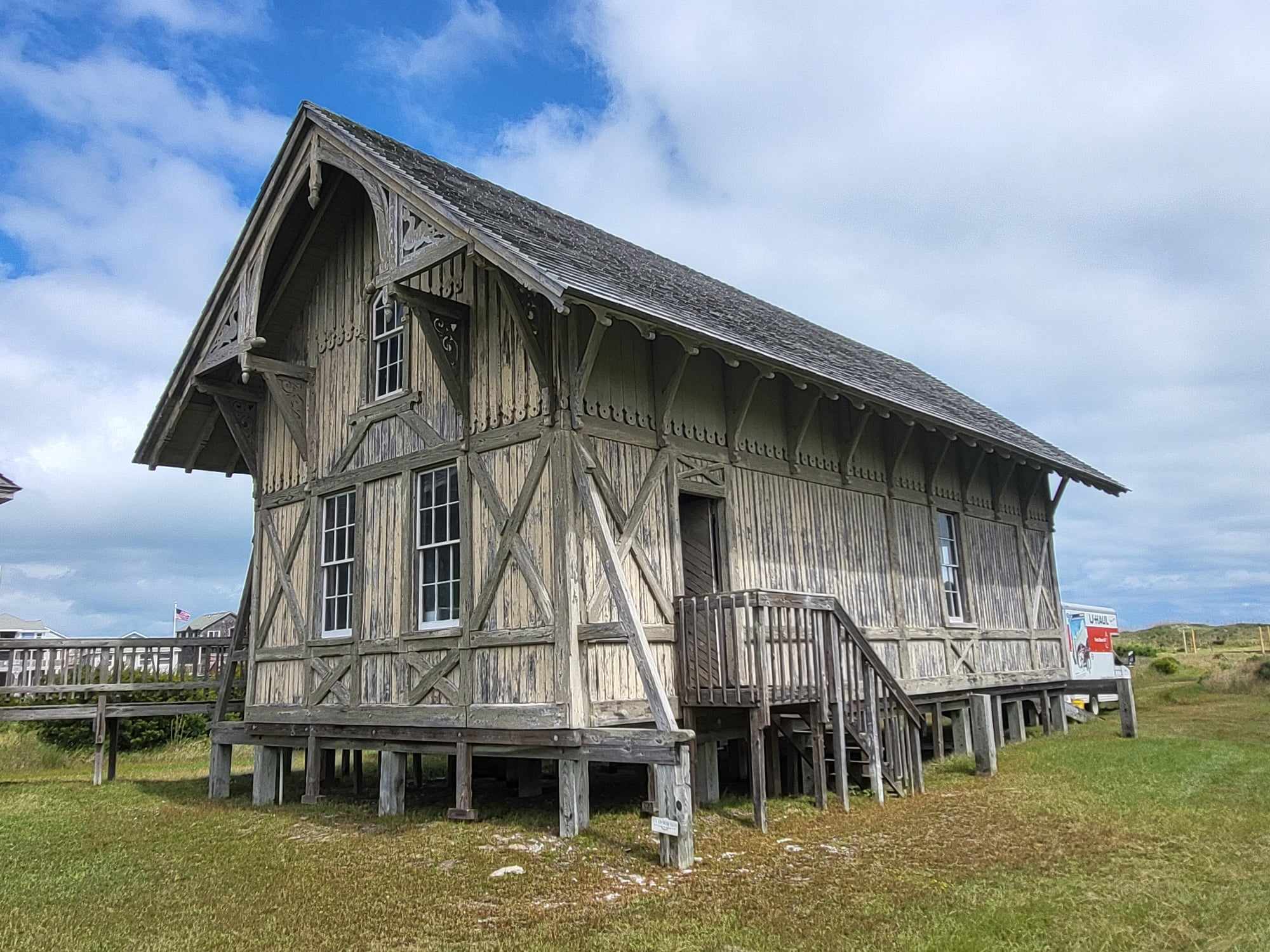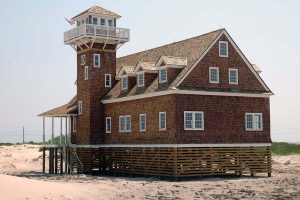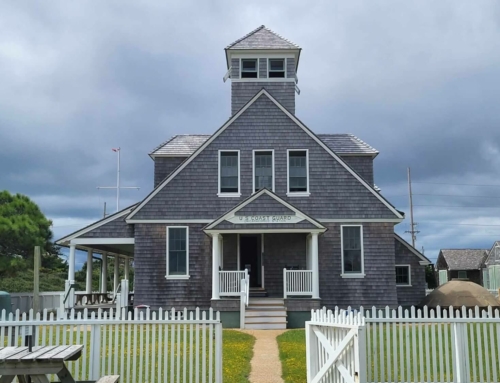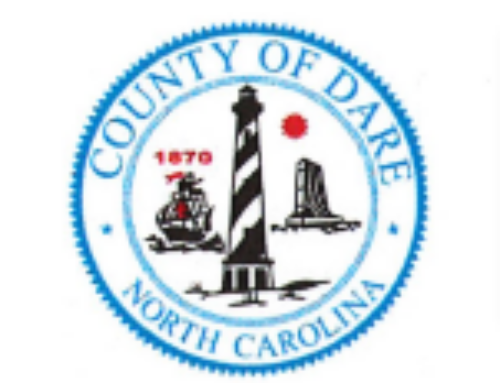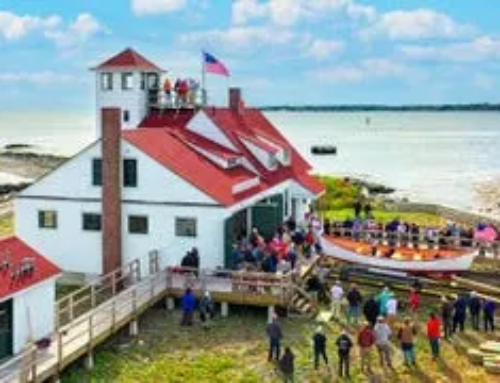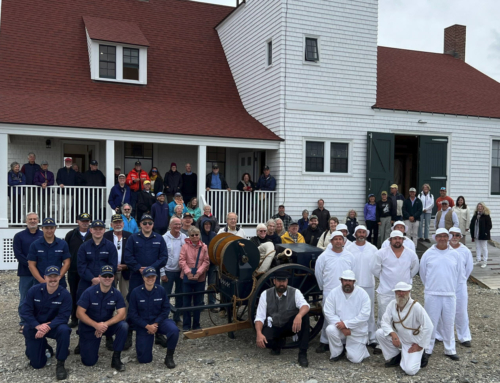1874 Chicamacomico Life-Saving Station. Photo by Joy Crist.
October 2024 will mark the 150th anniversary of the arrival of the Life-Saving Service along the North Carolina coastline, and multiple local and national organizations, (including the Chicamacomico Life-Saving Station and Historic Site), are already planning a celebration of this milestone along the Outer Banks.
The United States Life-Saving Service was the precursor to the modern-day U.S. Coast Guard, and in 1848, the U.S. Government provided funding to New Jersey to establish life-saving services along its coast. This set in place a foundation for what was to come, as the United States became increasingly industrialized, and the need to provide shipping along the Eastern Seaboard became apparent.
In 1871, Sumner Kimball was appointed to serve as Chief of the Treasury Department’s Revenue Marine Division, and he requested and was granted $200,000 to fund multiple Life-Saving Stations along the East Coast. Due to its centuries-old reputation as the Graveyard of the Atlantic, Kimball identified the coast of North Carolina as an area of highest priority.
By 1874, funds were appropriated to build seven stations in the state of N.C. These seven stations included the following:
- Chicamacomico Life-Saving Station – Chicamacomico was the first of the seven stations to be fully operational, and the original 1974 station and additional structures still remain as a popular Hatteras Island attraction and museum.
- Little Kinnakeet Life-Saving Station – Little Kinnakeet was deactivated in 1954, but the station still stands along the soundside, just north of Avon. While the buildings are closed to the public, the grounds can be visited, as the site is part of the Cape Hatteras National Seashore.
- Oregon Inlet Life-Saving Station – The newer 1898 Oregon Inlet Life-Saving Station, located on the southern edge of Oregon Inlet, still exists, although the station is closed to the public. Threatened by erosion, the future of this site remains uncertain.
- Nags Head Life-Saving Station – The original Nags Head Station no longer exists, as it was destroyed in 1962 during the historic Ash Wednesday Storm.
- Kitty Hawk Life-Saving Station – Located near milepost 4.5 on the Beach Road, the 1874 Kitty Hawk Station now houses the Black Pelican Restaurant.
- Caffey’s Inlet Life-Saving Station – Situated in the town of Duck on the Dare-Currituck County line, Caffey’s Inlet Life-Saving Station now serves as a restaurant within the Sanderling Resort.
- Jones Hill Life-Saving Station – Also called the Currituck Beach Station, Jones Hill was moved from its original location in Corolla to a site adjacent to the Penneys Hill Station for use as a private home.
In October of 1874, construction of all of the original seven stations was completed.
By 1878, an additional 11 stations were also built, eventually leading to the establishment of 29 stations along the coast of North Carolina, which were located approximately seven miles apart.
In 1915, the Revenue Cutter Service and the Life-Saving Service merged to form the modern U.S. Coast Guard. Over the course of its 44 years of operation (1874-1915), the Life-Saving Service responded to 28,121 vessels in distress.
Of 178,741 lives in peril at sea, 177,286 of those were rescued by the surfmen of the Life-Saving Service.
While any corresponding events are still a year away, multiple entities including the National Park Service, the Black Pelican Restaurant, Dare County, the Outer Banks Visitors Bureau, and the U.S. Coast Guard will likely collaborate for next year’s anniversary celebration, per an update from Chicamacomico Life-Saving Station Executive Director John Griffin.
In the meantime, the public can get a jumpstart on honoring the upcoming landmark year with a visit to the Chicamacomico Life-Saving Station and Historic Site in Rodanthe. For more information on hours of operation and special events at the site, visit https://chicamacomico.org/.

